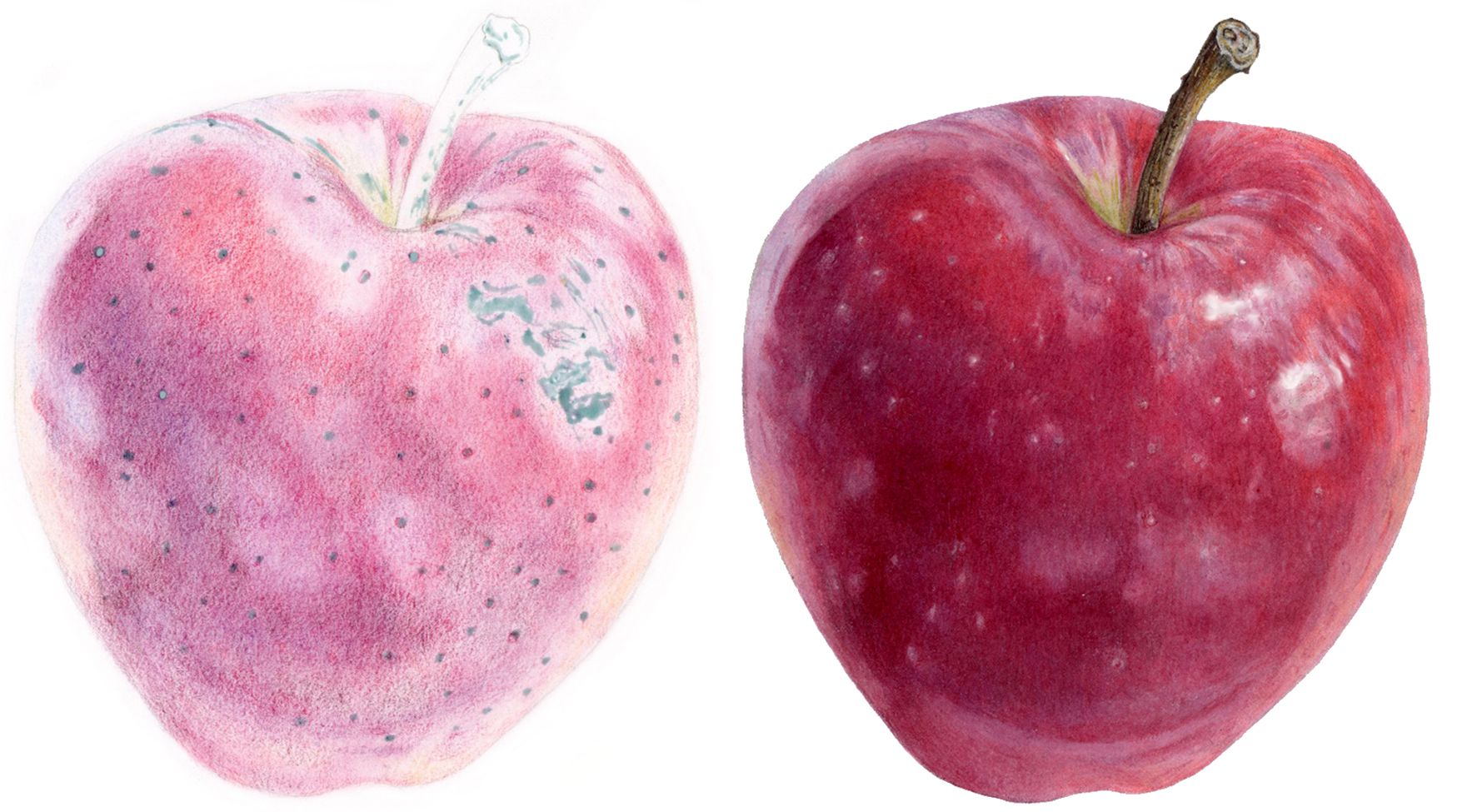It’s quite common for a botanical artist to reach a stage in a plant study where the effort invested in a developing piece appears to fall short of the anticipated results. One can experience a sense of inadequacy at the apparent lack of progress with the result that enthusiasm for the subject starts fading. This early to mid-stage disappointment is often intense to the point of feeling stuck and discouraged. The primary cause is an inability to visualize a successful end product; it’s referred to as as the “ugly duckling” phenomenon.
“Ugly duckling” is a reference to Hans Christian Andersen’s “The Ugly Duckling,” a tale with a message about, among other things, transformation. You may recall that it’s a story about a young bird who is ridiculed and rejected because he looks different from the duck family he grows up among. He believes himself to be ugly and unworthy. Eventually, however, he discovers that he was never a duckling at all, but a young swan, growing into his natural beauty and grace. There’s an obvious parallel with the process of producing a botanical art piece.
Botanical art, rooted in science, demands a level of accuracy achieved through patience and, above all, trust in the necessary process of working diligently through the developing stages. Quite simply, there are no short cuts. On the path to achieving realism, it’s all about building form and structure, and light and shadow in careful, gradual layering whether working in graphite, coloured pencil, watercolour, or a combination of mediums. In colour layering, it’s also about maintaining highlights, subtleties, and smoothness in transitions until reaching the levels of full intensity where needed.
In watercolour, early washes in a wet-on-wet style may look streaky, with less than pristine edges. Petals or leaves may appear flat and impossibly distant from a surface that demands markings or surface texture, fine detailing, light, and shadow. To say nothing of essential form too.
But instead of being discouraged, one needs to understand the essential stages of the process in creating a botanical painting. Trusting and adhering to a defined process with its various stages, is essential.
The key for inexperienced artists not accustomed to a disappointing lack of progress at certain stages, is to not panic or, worse yet, abandon the work. When the piece looks less than satisfactory one needs to pause for a reality check and remember that every finished piece they have ever admired, passed through the inevitable “ugly duckling” stage. It often helps to take a break and return later to continue the process with renewed optimism.
Experience brings trust in the process. Experienced artists readily recognize the “ugly duckling” stage for what it is—merely the point at which a transformation may seem impossible. But, experience assures one that the “ugly duckling” is just a phase on the way to the eventual emergence of the swan.
So, as long as we keep in mind that the “ugly duckling” is merely a part of the process we can keep it in context and not become discouraged. Ultimately, trust the process.

